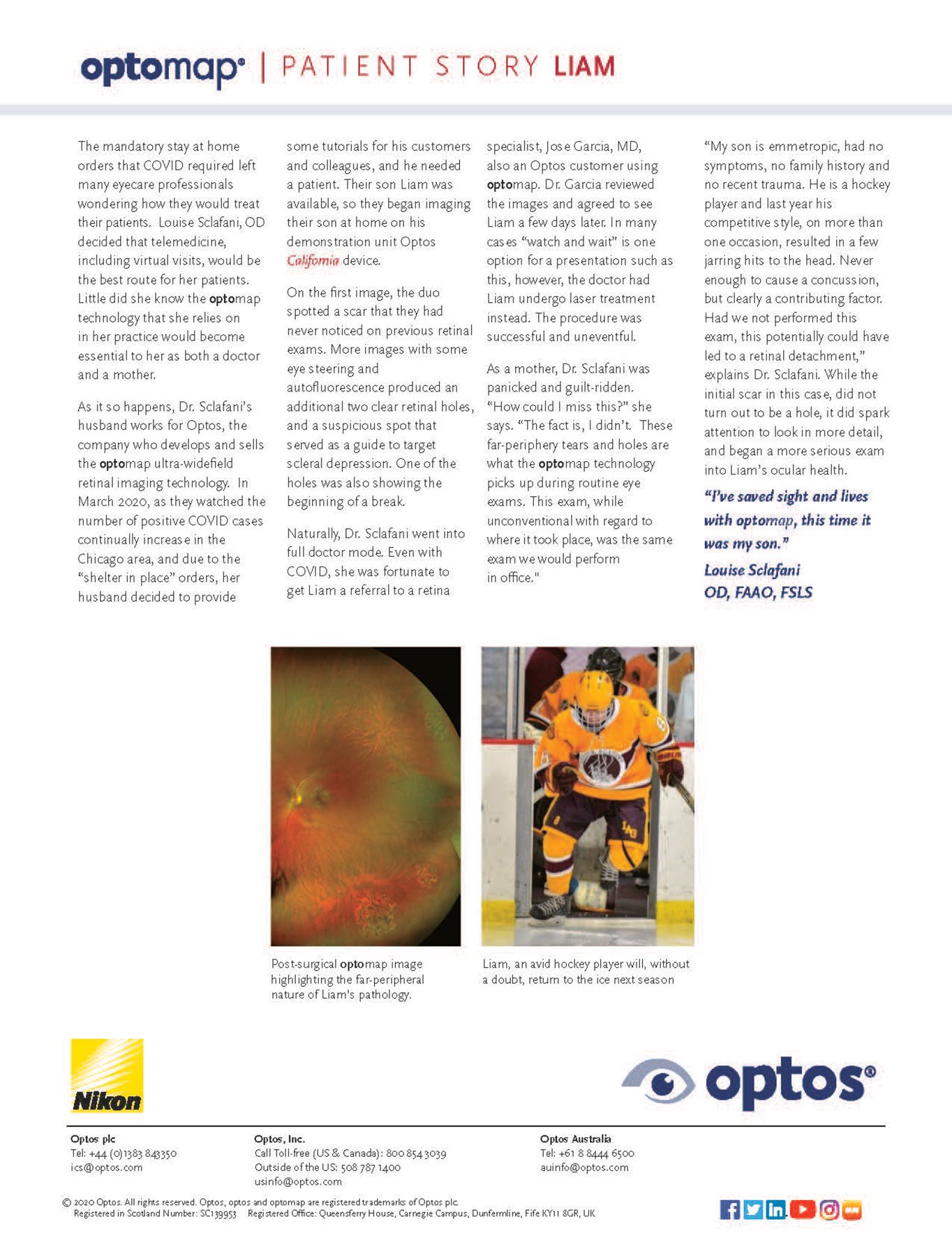The mandatory stay at home orders that COVID required left many eyecare professionals wondering how they would treat their patients. Louise Sclafani, OD decided that telemedicine, including virtual visits, would be the best route for her patients. Little did she know the optomap technology that she relies on in her practice would become essential to her as both a doctor and a mother.
As it so happens, Dr. Sclafani’s husband works for Optos, the company who develops and sells the optomap ultra-widefield retinal imaging technology. In March 2020, as they watched the number of positive COVID cases continually increase in the Chicago area, and due to the “shelter in place” orders, her husband decided to provide some tutorials for his customers and colleagues, and he needed a patient. Their son Liam was available, so they began imaging their son at home on his demonstration unit Optos California device.
On the first image, the duo spotted a scar that they had never noticed on previous retinal exams. More images with some eye steering and autofluorescence produced an additional two clear retinal holes, and a suspicious spot that served as a guide to target scleral depression. One of the holes was also showing the beginning of a break.
Naturally, Dr. Sclafani went into full doctor mode. Even with COVID, she was fortunate to get Liam a referral to a retina specialist, Jose Garcia, MD, also an Optos customer using optomap. Dr. Garcia reviewed the images and agreed to see Liam a few days later. In many cases “watch and wait” is one option for a presentation such as this, however, the doctor had Liam undergo laser treatment instead. The procedure was successful and uneventful.

As a mother, Dr. Sclafani was panicked and guilt-ridden. “How could I miss this?” she says. But, she didn’t. These far-periphery tears and holes are what the optomap technology picks up during routine eye exams. This exam, while unconventional with regard to where it took place, was the same exam we would perform in office."
Liam never exhibited symptoms, has no family history or recent trauma. He is a hockey player and his competitive nature did however on more than one occasion result in a few jarring hits to the head. Never enough to cause a concussion, but a contributing factor. Had the couple not performed this exam, this potentially could have led to a retinal detachment. While the initial scar in this case, did not turn out to be a hole, it did spark attention to look in more detail, and began a more serious exam into Liam’s ocular health.
In recognition of Children’s Eye Health and Safety Month, we continue to highlight the importance of not only annual, routine eye exams, but the importance of comprehensive exams, including a look at the retina. Optos ultra-widefield (UWF™) imaging technology only takes seconds and provides a highly detailed view of the retina, with little to no face to face interaction, aiding in early detection of retinal holes and detachments that often show no early symptoms, but can also be treated successfully when diagnosed early. While we continue to adapt to new norms, eye care remains a top priority, and it’s important to continue to provide patients the technological advancements available with optomap. optomap provides the technology to make clinical diagnosis and patient education easier. Visit our website to learn additional benefits of implementing optomap in your clinical setting and provide the highest level of care to your patients.